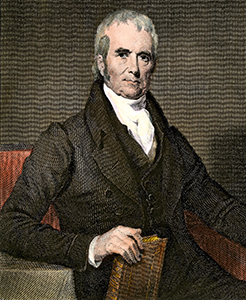Middle School Chapter 3:
The 13th Amendment: Was Freedom Achieved?
Introduction
In 1865, the ratification of the 13th Amendment officially ended slavery in the United States. After fighting for their liberty before and during the Civil War, enslaved African Americans saw their dreams of emancipation realized. In the years that followed the end of the war, Virginia and other southern states had to reconfigure their social, economic, and political systems during a period called Reconstruction. During this era, newly freed Black Virginians experienced advancements but also encountered barriers to achieving true equality. This lesson explores whether African Americans truly “free” following the passage of the 13th Amendment.
Standards
Virginia
- USI.9 The student will apply social science skills to understand the causes, major events, and effects of the Civil War by:
- b) explaining how the issues of states’ rights and slavery increased sectional tensions
- USII.3 The student will apply social science skills to understand the effects of Reconstruction on American life by:
- a) analyzing the impact of the 13th, 14th, and 15th Amendments to the Constitution of the United States and how they changed the meaning of citizenship
- b) describing the impact of Reconstruction policies on the South and North
- USII.9 The student will apply social science skills to understand the key domestic and international issues during the second half of the twentieth and early twenty-first centuries by:
- a) examining the impact of the Civil Rights Movement, the Americans with Disabilities Act (ADA), and the changing role of women on all Americans
National
- NSS-USH.5-12.5 Era 5: Civil War And Reconstruction (1850-1877)
- NSS-USH.5-12.9 Era 9: Postwar United States (1945 TO EARLY 1970s)
Key Hook/Question
Were African Americans truly free following the passage of the 13th Amendment?
Downloads
The slideshow below can be used in this browser-based format, or downloaded as a presentation or PDF outline. You may also use the button below to make a Google Slides copy in order to adapt or edit the presentation.
Suggestions for Adaptations
All of our lesson plans are designed to be adaptable to your needs. After downloading a copy of these Google Slides, feel free to rearrange their order, pick and choose elements that work best for your students, or add to the content to supplement an area to which you’d like to add extra emphasis.
Additionally, our activities can be uploaded to any platform (such as Google Classroom) and shared with students directly so that they can complete the activity individually on their own devices. You can also project the lesson plan and have students look on as an entire class as you lead them through it.
- This lesson can be broken into chunks for small group work, and then students can gather afterwards for a large class discussions. For example: students can complete slides 9-10 in small groups and regroup to discuss as a class before completing slide 11 as a formative assessment.
- Students examine could selected slides (such as 10, 14 and 17) to complete the primary source activities within them, and then compare results with another group.
- Student groups could also focus on one clue (such as slides 9-11) and present their findings to the class. This could help minimize time restraints and address student needs.
- This lesson could be introduced with a specific conversation on resistance and what that term means. Slide 5 (and others) could be taken out and formatted to create a “gallery walk” discussion, where you print out the images and place them on your walls to allow students to walk around and make observations about what they see.
- SOL suggestions:
- This lesson could be introduced with a review on key terms found from the SOL 6E (sectional tensions), 7a (the Civil War), 7b (emancipation proclamation) or 7D (reconstruction plans)
- Teachers can highlight and review key vocabulary terms and concepts that are important for the SOL. For example: you could discuss throughout the activity Jamestown 1619, the abolitionist movement, Nat Turner, Gabriel Prosser, the Civil War, Reconstruction plans, African Americans during the war, Economic impact (7e)





